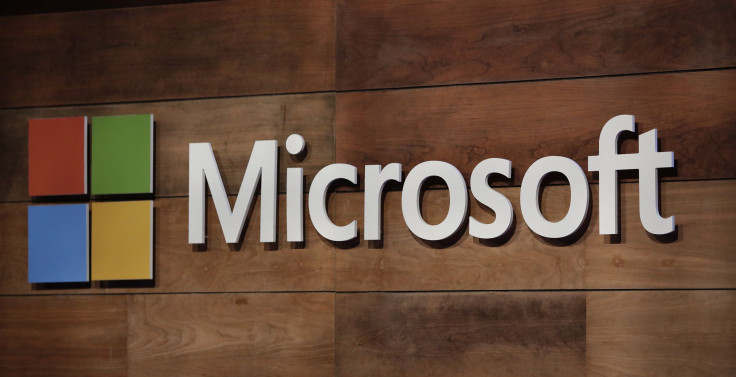3 Things Microsoft Does Better Than Google

Microsoft (NASDAQ:MSFT) and Alphabet (NASDAQ:GOOG) (NASDAQ:GOOGL), the parent company of Google, both outperformed the S&P 500 over the past decade. Microsoft's stock rallied over 400%, as a new CEO streamlined the tech giant's business and prioritized its higher-growth businesses like cloud services, gaming, and mobile apps. And Alphabet's stock surged over 300% as Google locked in more advertisers with its sprawling ecosystem.
Google was once considered a hotter growth stock than Microsoft. But under Satya Nadella, who succeeded Steve Ballmer in 2014, Microsoft arguably became the more exciting growth stock. Let's take a look at the three key things Microsoft does better than Google, and how they could propel the stock to fresh highs in 2020.
1. Cloud services
Microsoft aggressively expanded its public cloud services -- including its cloud platform Azure, its Office 365 productivity suite, and its customer relationship management platform Dynamics 365 -- after Nadella took the helm. Nadella's main strategy was to turn Microsoft into a "cloud first, mobile first" company. Those investments initially weighed down Microsoft's profits, but ultimately paid off as its commercial cloud revenue surged.
Microsoft ranked second after Amazon in the global public cloud services market in 2018, according to Gartner, with a 15.5% share. Google, which struggled with ongoing management changes and conflicts at its cloud division, ranked fourth with a 4% share.
Microsoft's Office 365 also crushed Google's G Suite as the preferred cloud-based productivity software suite among enterprise customers. Bitglass estimates that between 2014 and 2018, the adoption rate of Office 365 (among organizations which adopted public cloud services) surged from 7.7% to 56.3%. G Suite's adoption rate only rose from 16.3% to 24.8%.
2. Video games
Microsoft entered the video game console market 18 years ago with the Xbox, then subsequently launched the Xbox 360 in 2005 and the Xbox One in 2013. Microsoft sold over 45 million Xbox Ones over the past six years, making it the world's second largest console maker after Sony.
The Xbox served as a launchpad for monthly subscription services like Xbox Live, which enabled online multiplayer gaming and digital downloads, and Xbox Game Pass, a service that grants players unlimited downloads from a library of over 100 games. It's also testing a new cloud gaming service, xCloud, which could complement those services in the near future.
Google also tried to crack the video game market, but its strategies were mostly half-baked. It launched its Nexus Player set-top box for playing Android games on TVs in 2014, but it flopped because most games were optimized for mobile devices with touch screens. Other set-top box makers that tried to bring Android games to TVs suffered similar fates.
Last year Google launched its cloud gaming platform Stadia and Google Play Pass, an unlimited game and app service for mobile devices. Yet Stadia was poorly received, due to technical issues, a weak lineup of games, and a confusing business model which sold games on an a la carte basis. Play Pass was meant to compete against Apple Arcade and Xbox Game Pass, but it lacked platform-exclusive games and apps.
3. Social networking
Google repeatedly tried to challenge Facebook in the social networking market, but it churned out failures like Google Buzz, Google Wave, and Google+. These platforms flopped for three main reasons: Facebook maintained its first mover's advantage in the market, the services were extensions of Google's ecosystem instead of cohesive social networks, and Google didn't aggressively invest in their development or growth.
Unlike Google, Microsoft realized that it would be futile to compete against Facebook in the mainstream social networking market. Instead, it acquired the professional social network LinkedIn for $26 billion in late 2016.
LinkedIn continued growing under Microsoft's watch. It hit nearly 660 million members last quarter, and the unit's marketing solutions revenue surged 44% annually. LinkedIn only generated 6% of Microsoft's revenue last quarter, but it's far more successful than any of Google's social strategies.
The bottom line
Back in 2009, most investors probably didn't believe that Microsoft would outperform Google over the following decade. However, they likely didn't expect a game-changing CEO to breathe fresh life into Microsoft as Google squandered some of its resources on ill-conceived projects. Microsoft and Alphabet are still both solid long-term investments, but the former is clearly outperforming the latter in the cloud, gaming, and social markets.
This article originally appeared in the Motley Fool.
Leo Sun owns shares of Amazon, Apple, and Facebook. The Motley Fool owns shares of and recommends Alphabet (A shares), Alphabet (C shares), Amazon, Apple, Facebook, and Microsoft. The Motley Fool recommends Gartner and recommends the following options: long January 2021 $85 calls on Microsoft and short January 2021 $115 calls on Microsoft. The Motley Fool has a disclosure policy.





















